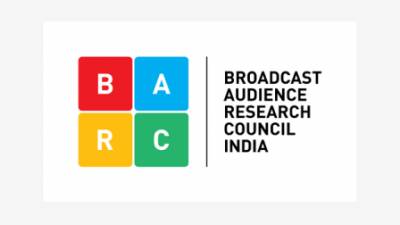BARC India thanks all their stakeholders
In possibly it's first report the newly formed body BARC India has thanked all the broadcasters for the encouragement with their investment in the installation of Watermarking Embedders. With upwards of 275 Channels having ordered for embedders, all major networks in each region and across genres are on-board. This shows their conviction in participation to create history with the World’s largest television audience measurement system.
"It has also appreciated the Advertisers and Media Agencies who have been most welcoming on our ‘Reach-Out meetings’ post the BARC India Roadshows. Their feedback has helped us sharpen the front-end User interface into a first class User experience. As we continue to connect individually with as many as we can, we are listening to feedback and insights for further development," said the report.
In a recent tweet by Punit Goenka, Chairman BARC India, he mentioned that, "Playout monitoring facilities are in action too and meta-tagging of content across Watermarked Channels is in full throttle in Mumbai and Bangalore. It is indeed another brick in the wall."
We have tested the end to end integration of the system and it is working perfectly fine. The technology handshakes are in place and Ratings are being generated from the BARC system now. The same was also tweeted by BARC recently.
Some of the key developments and initiatives are mention below:
BARC India and the importance of Relative Error: Over the past few months, BARC India has highlighted its commitment to data robustness and has spoken about lower Relative Errors at high Confidence Levels. BARC has repeatedly highlighted that Relative Errors are an important factor to be considered whenever we evaluate the ratings data, or read any research report, for that matter.
Relative Error and its Impact on Research Data: It is not possible to sample every individual (except perhaps, a Census). Hence, sample surveys were undertaken. Statistics offers scientific methods to estimate phenomena across entire populations by studying samples. Any sample survey suffers inherently from various errors. Owing to these, Statistics never talk about an average (or mean) without talking simultaneously about a measure of dispersion, usually the standard deviation.
A researcher has to balance between demands of greater accuracy and constraints of finite resources. Statisticians therefore work with defined ‘Confidence Intervals’ and ‘Sampling Errors’. One of these sampling errors is the ‘Relative Error’, or the deviation (in percentage) of the observed value from the actual (expected) value.
Confidence Level (or Confidence Interval): Confidence Level is generally defined as a percentage or a decimal figure less than 1. So, if a researcher says that the Confidence Interval is 90%, what he means is that 90% of the samples of the same size taken from the same population will produce results within a defined range.
Relative Error: Let’s explain it simply with the example of a TV programme. A TV ratings measurement system estimates that the programme has 1 TRP with a standard deviation of 0.25. This means that the actual rating is expected to lie between 1-0.25 and 1+0.25 or 0.75 and 1.25. The relative error is simply 0.25/1.0 or 25%.
In other words, it is important for a research to ensure least possible Relative Error at the highest possible Confidence Level, else it risks generating data with such wide variance that it becomes meaningless. Just imagine saying that a programme has 1 TRP at the above Relative Errors. What you’re really saying is that there is a two-thirds possibility that the TRP is between 0.5 and 1.5 and a one-third possibility that the TRP could be either lower than 0.5 or higher than 1.5! And even for this, you are only 67% sure. If someone asks you what is the range of possibilities for which you are 90% sure?
Factors affecting Relative Error
The most important factor that affects Relative Error is Sample Size. Relative Error increases in geometric magnitude as sample size decreases, while it becomes independent of sample size beyond a certain threshold.
Sampling is also relatively simpler when estimating a homogenous population and more complex for heterogeneous population. It is hence extremely important to have a significantly large sample size, especially when calculating estimates for large heterogeneous universe.
How BARC India intends to handle issues related to sample size to ensure robustness of data
For instance, a hypothetical scenario is given below:
A planner wishes to evaluate programme viewership for the following TG for a premium brand - Males, NCCS AB, 40+ in Delhi
Total Sample Size: 130
Approx. Sample Size for a programme with a rating of 1% viewers: 13
A sample size of 13 is way too low to do any meaningful evaluation.
Hence, BARC India would not encourage such evaluation
BARC India is also another round of Roadshows in February 2015 on user interface ( GUI)

















Share
Facebook
YouTube
Tweet
Twitter
LinkedIn